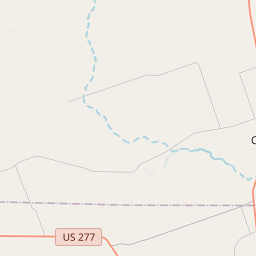Crystal City Family Internment Camp, World War II
Historical marker location:






When the U.S. entered the war in 1941, an immediate fear was the possibility of enemy agents in the country and the Western Hemisphere. As one response, thousands of Japanese-Americans were moved away from the West Coast. Lesser-known was an internment camp system operated by the Immigration and Naturalization Service. The government built these camps to hold Japanese, German and Italian nationals arrested in the U.S. and Hawaii, and in Peru and other Latin American countries until they could be exchanged for American detainees. Three of these camps were in Texas at Kenedy, Seagoville and Crystal City.
The Crystal City camp, converted from an existing migratory labor camp, was the largest internment facility in the U.S. and the only one built exclusively for families. The original 200-acre camp later expanded to almost 500 acres, with agricultural areas and support facilities. The primary living area was a 100-acre compound enclosed by a 10-foot barbed wire fence, complete with guard towers and spotlights. Like a small town, the compound had 700 buildings and included family housing, schools, a hospital, shops, warehouses, markets and recreation areas.
Although intended for Japanese, the Crystal City camp also held Germans and a few Italians. The population averaged 2800 throughout the war. It reached a peak of almost 3400 in December 1944, two-thirds of whom were Japanese. At the end of the war, the government paroled internees throughout the U.S. or sent them to their home countries. The Crystal City camp was the only one still in operation by June 1946. It officially closed February 27, 1948, and the property transferred to the city and school district.
Texas in World War II, V+60 (2005)
As one of the most visible programs of the Texas Historical Commission (THC), historical markers commemorate diverse topics in Texas history, including: the history and architecture of houses, commercial and public buildings, religious congregations, and military sites; events that changed the course of local and state history; and individuals who have made lasting contributions to the state, community organizations, and businesses.
Texas is also home to the world's largest honky-tonk, Billy Bob's Texas in Fort Worth. The venue covers three acres and can hold up to 6,000 people.
In the early 19th century, Spanish ranchers settled in the region, establishing large cattle ranches. With the signing of the Adams-Onis Treaty in 1821, Zavala County became part of the newly independent country of Mexico. The establishment of the Republic of Texas in 1836 brought an influx of American settlers to the area, seeking opportunities for farming and ranching.
The county was formally established in 1858 and named after Lorenzo de Zavala, an influential Mexican politician who had supported the Texas Revolution. However, it wasn't until the 1870s that the county experienced significant growth with the arrival of the railroad. The railroad brought increased commerce and connected the county to larger cities in the state.
With the discovery of oil and gas in the early 20th century, Zavala County experienced an economic boom. The oil industry brought jobs and prosperity to the region, attracting workers from across the country. Today, Zavala County remains an important hub for agriculture, oil, and gas production, preserving its rich history while continuing to evolve and adapt to the changing times.
Zavala County Timeline
This timeline provides a concise overview of the key events in the history of Zavala County, Texas.
- 1847 - Zavala County is officially established by the Texas legislature.
- 1853 - The county seat is designated as Batesville.
- 1858 - Batesville is abandoned as the county seat and moved to a new location called Uvalde.
- 1870 - Crystal City becomes the new county seat.
- 1944 - The town of La Pryor is established.
- 1952 - The railroad is extended to Crystal City, boosting the local economy.
- 1985 - The Mexican American Legal Defense and Educational Fund sues the county over voting rights, leading to the implementation of single-member districts.
- 2004 - The Zavala County Jail is closed due to inadequate conditions.
- 2017 - Hurricane Harvey causes significant damage to the county, leading to evacuations and recovery efforts.